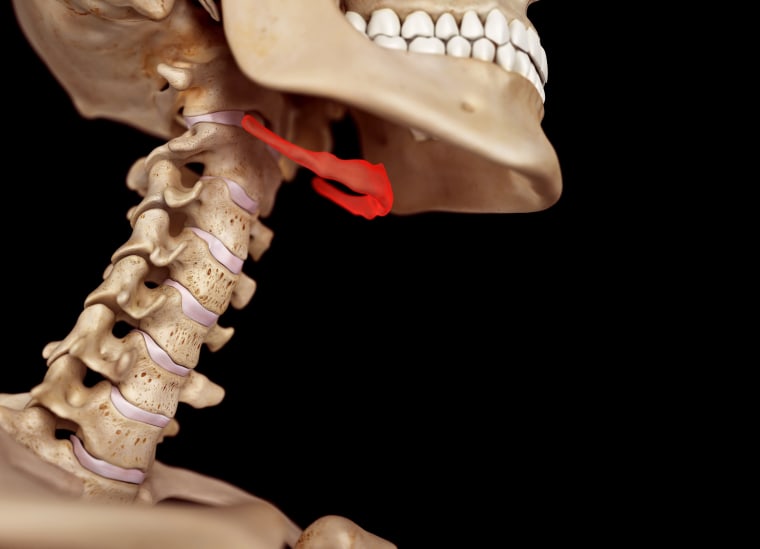Jeffrey Epstein's autopsy revealed that he broke a bone in his neck, according to a person familiar with the matter, an injury commonly found in victims of hanging and strangulation.
The New York City Medical Examiner has not yet officially released his cause of death, citing a need for more information. Multiple sources have told NBC News the wealthy financier and accused sex trafficker is believed to have hanged himself.
While there's still no indication of foul play, questions have been swirling around the death of Epstein since last Saturday when he was found unresponsive in his federal jail cell. But experts say the disclosure that he broke his hyoid bone, a small horseshoe-shaped bone near the base of the human jaw, provides no reason to doubt that Epstein killed himself.
"It wouldn’t be out of the realm of possibilities, with no evidence of foul play, that he hanged himself and got the hyoid fracture that way,” said NBC News medical correspondent Dr. John Torres. "That wouldn’t be unusual."
Torres said hyoid fractures grow more likely for older adults and studies show them to occur in roughly 25 percent of hanging deaths and 35 percent of strangulation deaths.
“It depends on what was used for the hanging — was it a rope? a sheet? Something else? — and how was the knot tied and what kind of force applied?” Torres said.
The finding about the broken neck bone was first reported by The Washington Post. Two law enforcement sources told NBC News there's still no indication of foul play in his death.
New York City Chief Medical Examiner Barbara Sampson released a statement Thursday cautioning against making conclusions based on any individual findings.
“In all forensic investigations, all information must be synthesized to determine the cause and manner of death," Sampson said. "Everything must be consistent; no single finding can be evaluated in a vacuum.”
The FBI and Department of Justice Inspector General are investigating the case.
Epstein, 66, was locked up at the Metropolitan Correctional Center in lower Manhattan awaiting trial on charges of sex trafficking and conspiracy.
Download the NBC News app for full coverage of the investigation into Jeffrey Epstein’s death
Prosecutors alleged that he sexually abused dozens of underage girls and oversaw an extensive trafficking network in the early 2000s.
Epstein’s apparent suicide came less than three weeks after he was found unconscious in his cell, with marks around his neck. He was placed under suicide watch in a special cell with near round-the-clock observation.
But he was removed less than a week later and returned to a special housing unit where he was supposed to be checked every 30 minutes. On the morning he died, a period of hours passed before correctional officers looked in on him, sources have told NBC News.
Earlier this week, Justice Department officials announced that the facility’s warden was temporarily reassigned and two guards tasked with watching Epstein have been placed on leave.
"We are now learning of serious irregularities at this facility that are deeply concerning and demand a thorough investigation,” Attorney General William Barr said a day earlier. "This sex trafficking case was very important to DOJ and me personally. FBI and office of DOJ IG will get to the bottom of what happened and there will be accountability.”



